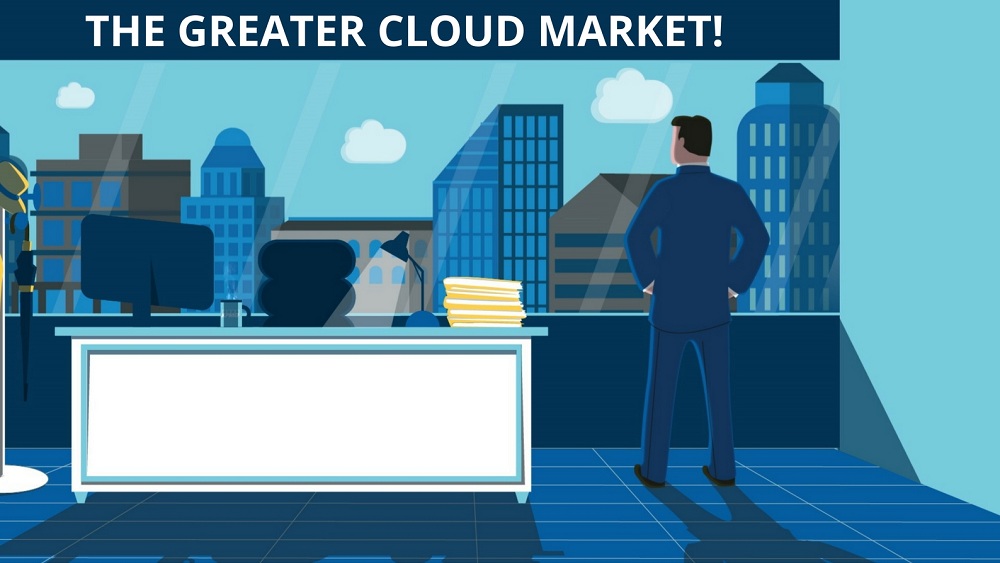Region
India
The IT department of companies are under constant pressure to apprehend the latest technologies and use them to manage businesses, store data, applications, and run processes. Success being the aim of every business, a huge amount of stress automatically falls on the IT department as we are living in the digital era. It’s no wonder, that due to this, planning for business continuity gets neglected even though it is important. However, ignoring the importance of having this is a mistake that will drastically impact the consistency of your business.
There have been many cases where huge establishments have lost millions because of the delay inflicted on their functioning by various problems like cyber-attacks, natural disasters etc. They permanently lose customers due to their inability to start providing services by recovering on time. Moreover, the trust on your firm will be severely reduced.
To ensure a quick and easy recovery of your data, IT professionals of your company have to come up with a detailed strategic business continuity plan. You can also seek the guidance of professionals. They can show how prone different parts of your business is to attack, suggest the right disaster recovery products like the backup servers, software, and even physical locations as you require and guide you to maintain stable functioning of your business.
The most recommended and affordable tool for business continuity is the cloud-based disaster recovery. As the cloud does not rely on hardware and is an independent virtual technology, processes like the backup of data, applications and operating systems to the desired data centre are quick. Cloud services enable faster downloads and thus, quicker recovery and your business can start functioning sooner. They also provide assistance to recognize your business vulnerabilities, formulate policies planning to include selecting the DR technologies most suitable for your business, IT and budget. That is, you require a business continuity plan.
Cloud provides innumerable features today and it is exciting to know that the number and reliability of these features are increasing. One of the most cost-effective solutions whose use has increased exponentially is Disaster Recovery as a Service (DRaaS). According to Gartner, DRaaS is a $2.02 billion business currently, and it is expected to reach $3.73 billion by 2021.
Features to look for in your business continuity solution –
Nowadays, businesses do not ponder on shifting to the cloud because of its reliability and abundant usage. But companies must consider the different DRaaS solutions and select the one which suits them the best. Here are a few factors which we would recommend you to consider before selecting your cloud service provider and going forth with your plan.
- Network and Latency
One of the crucial factors to consider before you take up any cloud solution is the speed of the connection. During a disaster outbreak, the speed of the connection influences the speed of recovery and thus, decides how fast the business will resume functioning. Furthermore, higher latency means higher downtime for the business. It is imperative to find a cloud provider with a low latency network and less downtime policy.
- Ease of Use
Migrating to the cloud has made business processes easier. But it is always good to be certain. Conduct a POC of your solution to see how easy it is to use and manage.
- Fail-over and fail-back
Your business functioning will be extremely affected if you cannot triumphantly failover when your environment is unfavourable to a secondary site and failback once your primary data centre is safe and secure to run. You should confirm that your customers can access your services as soon as possible.
- Location
It is a safe option to have copies of the same file to ensure you will not lose it. At the same time, it is clever to store the copy somewhere far where it will not be affected by the same calamity that destroyed the original copy. This guarantees that even if one of your copies is destroyed, the other will be safe and the downtime will be due to latency alone.
- Cost Effective
Another attractive attribute of cloud is that it is cost effective. As cloud services are not expensive, now businesses that are just booming can also secure their database. However, it is important to analyze and comprehend whether you can manage the cost of cloud services.
- RPO and RTO
RTO and RPO are crucial factors that influence your business tremendously. If your current business continuity plan does not get your business back up on time, this can lead to revenue and customer loss. This is an inevitable characteristic that has to be considered before executing any plan.
- Security
Before choosing a cloud provider you should understand their security parameters and how they are planning to protect your data. Most of the providers will encrypt your data when it is being moved and also when in rest.
- Scalability
Cloud solutions let you expand your business by being scalable. If you do not want to end up with a provider that penalizes you for your growth, you should get to know his policies.
- Reliability
Cloud solutions should be reliable. Firstly, understand your cloud provider’s SLA and how much downtime influences your business. This is where testing comes into the picture.
- Testing
If you do not test your plan, how can you ensure business continuity? It is mandatory that you conduct proper tests before there is a need to actually use the solution.
Conclusion
There are many benefits to deploying a cloud-based disaster recovery for business continuity solution. However, before you begin the implementation process, you must do your due diligence to ensure you have considered what kind of solution is right for your business. Understanding your options and evaluating it will increase your confidence and the chances of your cloud DR being successful. Redington Cloud Solutions can be your trusted partner in your cloud business continuity and disaster recovery journey. With our cloud managed service and skilled as well as experienced team, we together can build, manage and monitor your IT infrastructure impeccably.
Talk to our cloud experts now to revitalize your business with the amazing benefits cloud has to offer.





